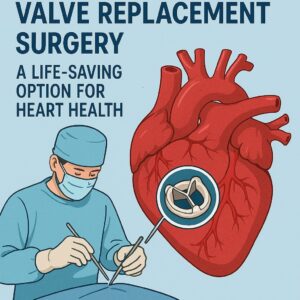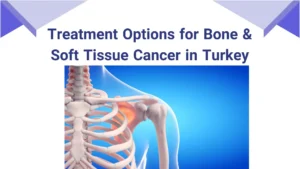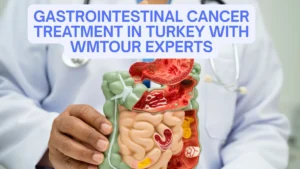Valve Replacement Surgery: A Life-Saving Option for Heart Health
Updated: August 11, 2025 — Expert guide for international patients considering valve repair or replacement.
Why valve replacement matter

When a heart valve becomes severely narrowed (stenosis) or leaks (regurgitation), blood flow and heart function suffer. In many cases, timely valve replacement restores normal circulation, reduces symptoms and can be life-saving. Clinical guidelines now list repair or replacement as core options for severe valvular disease after careful assessment. :contentReference[oaicite:0]{index=0}
Types of valve replacement and what to expect
Mechanical vs. biological (tissue) valves
Mechanical valves are durable and can last decades but typically require lifelong anticoagulation. Conversely, biological valves (from animal or human tissue) may avoid long-term blood thinners but have a finite lifespan and can eventually need re-intervention. Choice depends on age, lifestyle, pregnancy plans and patient preferences. :contentReference[oaicite:1]{index=1}
Open surgery, minimally invasive, and TAVR/TAVI
Valve replacement can be performed via traditional open-heart surgery, smaller surgical incisions (minimally invasive), or by catheter (TAVR/TAVI) for selected aortic valve patients. Recent randomized and guideline data have expanded TAVR use, including earlier intervention in some groups — a development changing the treatment landscape. :contentReference[oaicite:2]{index=2}
Who is a candidate?
Patients with severe symptomatic valve disease, or certain asymptomatic patients with high-risk features, are typical candidates. Decisions rely on imaging (echocardiography), heart team review and comorbidity assessment. International patients often require multidisciplinary pre-assessment and coordinated planning. :contentReference[oaicite:3]{index=3}
Benefits, risks and recovery
Valve replacement often improves breathlessness, exercise tolerance and life expectancy. Yet, risks include bleeding (especially with mechanical valves), infection, stroke, and need for future procedures. Recovery varies with technique: catheter approaches usually shorten hospital stays; open surgery requires longer convalescence. :contentReference[oaicite:4]{index=4}
Special considerations for international patients
Traveling for valve surgery needs careful planning: verify hospital accreditation, obtain complete records, arrange follow-up, and confirm access to anticoagulation monitoring if required. WMEDTOUR helps international patients with these exact logistics. :contentReference[oaicite:5]{index=5}
Valve replacement and pelvic organ prolapse — what to know
Pelvic organ prolapse (POP) is unrelated anatomically to heart valves, yet patients with POP who also need valve replacement have overlapping considerations — notably anticoagulation and timing of procedures. If anticoagulation is needed after mechanical valve implantation, elective pelvic surgery may be delayed or managed with a coordinated plan to reduce bleeding risk. Always coordinate cardiac and pelvic surgical teams before travel or combined care. :contentReference[oaicite:6]{index=6}
Choosing a hospital and surgeon
Seek high-volume centers with multidisciplinary valve teams, experienced surgeons, and strong postoperative care — these attributes link to better outcomes. Accredited specialized centers in our network include world-class hospitals across continents. Examples of leading centres with dedicated valve programs: Mayo Clinic, Cleveland Clinic, Johns Hopkins, Mount Sinai, Royal Brompton, Stanford and Tehran Heart Center. :contentReference[oaicite:7]{index=7}
Professional comparison table: Non-surgical vs Surgical options
| Feature | Non-surgical / Catheter (TAVR) | Surgical (Open / Minimally invasive) |
|---|---|---|
| Common indications | Primarily aortic stenosis in older or high-risk patients | Severe valve disease across all ages, complex anatomy |
| Hospital stay | Shorter (2–5 days) | Longer (5–10+ days) |
| Recovery | Faster return to activity | Longer cardiac rehab, slower recovery |
| Durability | Good but evolving long-term data | Established long-term results (mechanical very durable) |
| Anticoagulation | Often not required long-term (bioprosthetic) | Often required with mechanical valves |
| Re-intervention | Possible valve-in-valve procedures | Reoperations can be more complex |
How WMEDTOUR supports you
WMEDTOUR coordinates end-to-end care: expert consultation, second opinions, treatment coordination, and full travel & accommodation support for medical tourists — including patients with pelvic organ prolapse who need special planning around anticoagulation.
Practical checklist before travel for valve replacement
- Gather complete medical records and recent echocardiogram
- Check hospital accreditation and surgeon experience
- Discuss anticoagulation plans with both cardiac and pelvic teams if needed
- Arrange post-op follow-up locally or via telemedicine
- Confirm insurance, pricing and travel logistics with your coordinator
Further reading and verified resources
Authoritative sources and hospital pages used to prepare this guide:
- American Heart Association. :contentReference[oaicite:8]{index=8}
- Mayo Clinic — Heart valve surgery. :contentReference[oaicite:9]{index=9}
- Cleveland Clinic — Valve replacement. :contentReference[oaicite:10]{index=10}
- NICE guideline NG208. :contentReference[oaicite:11]{index=11}
- ESC/EACTS Guidelines. :contentReference[oaicite:12]{index=12}
- Recent NEJM TAVR studies. :contentReference[oaicite:13]{index=13}
- WHO — Cardiovascular diseases & rheumatic heart disease. :contentReference[oaicite:14]{index=14}
- Johns Hopkins — Valve surgery. :contentReference[oaicite:15]{index=15}
- Mount Sinai — Valve programs. :contentReference[oaicite:16]{index=16}
- Stanford Health Care — Heart valve services. :contentReference[oaicite:17]{index=17}
- Tehran Heart Center. :contentReference[oaicite:18]{index=18}
- Royal Brompton :contentReference[oaicite:19]{index=19}_



